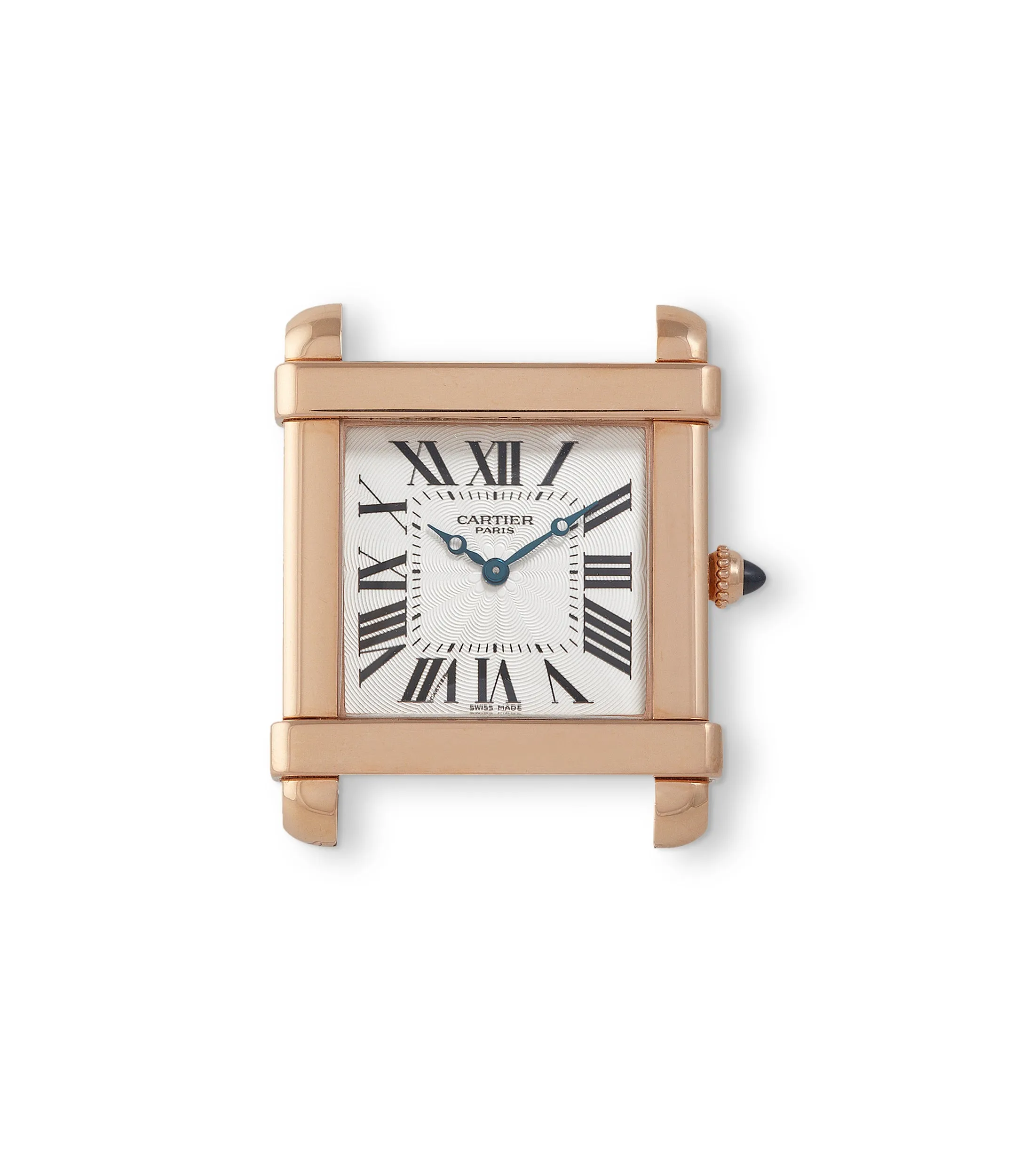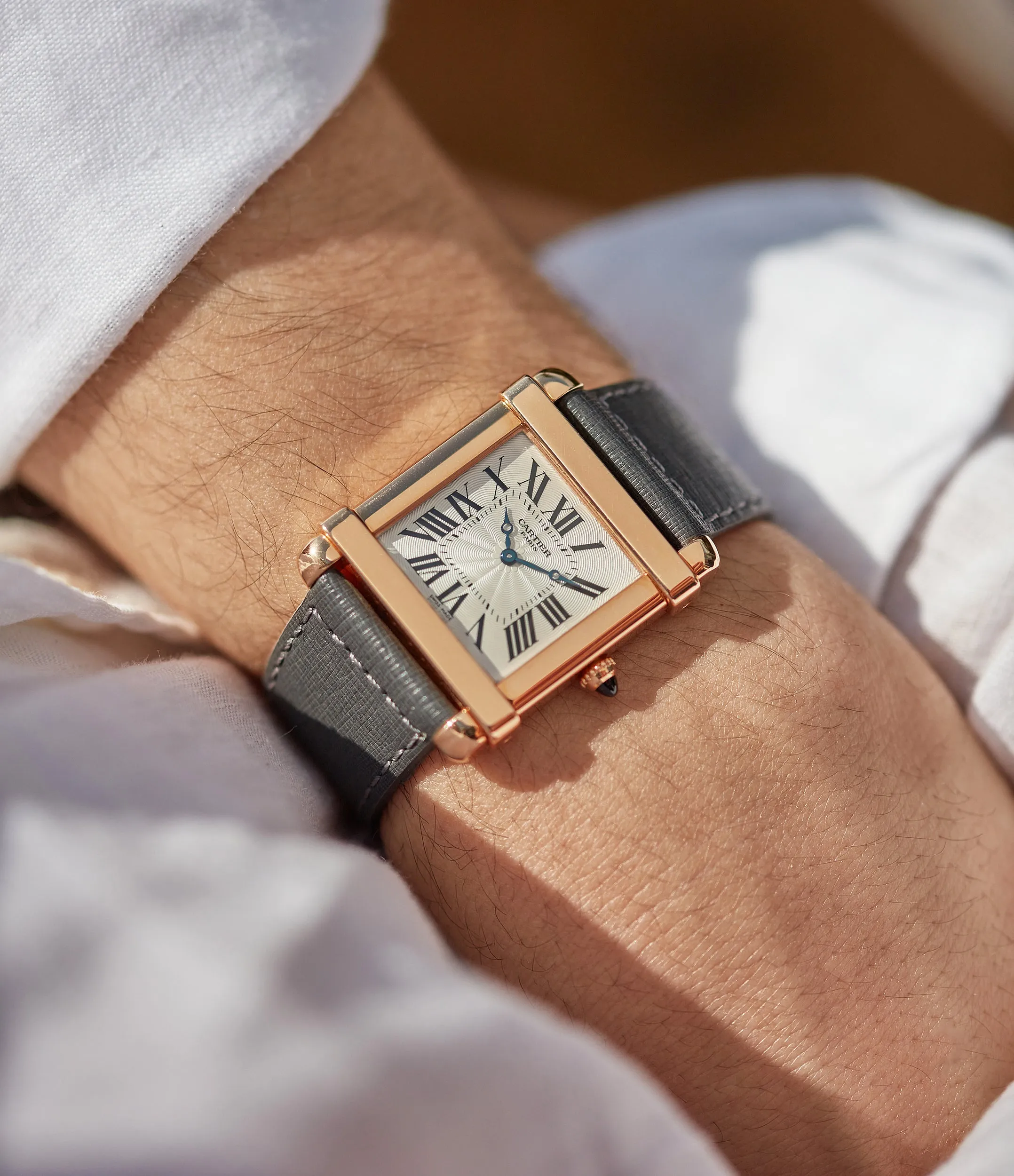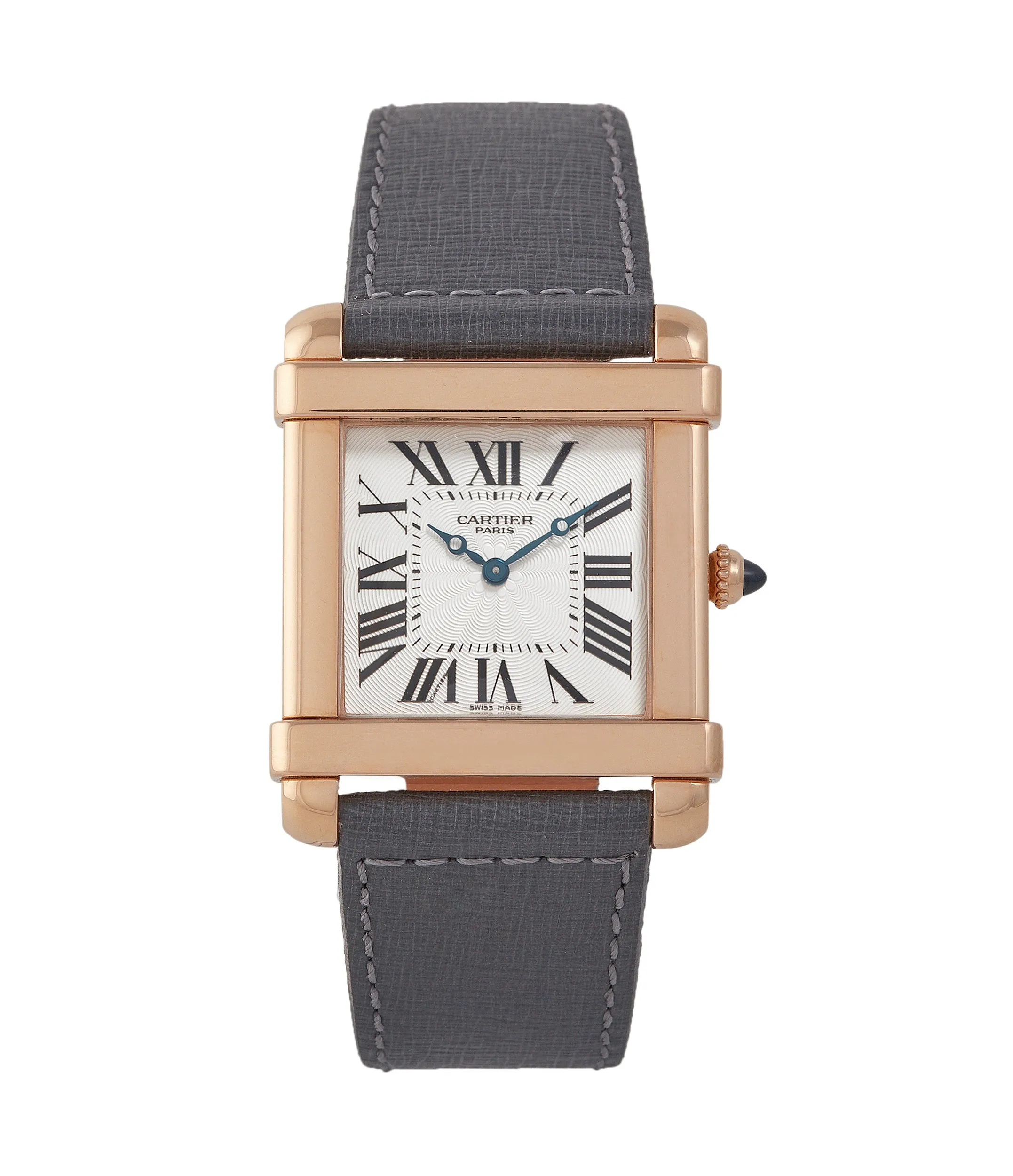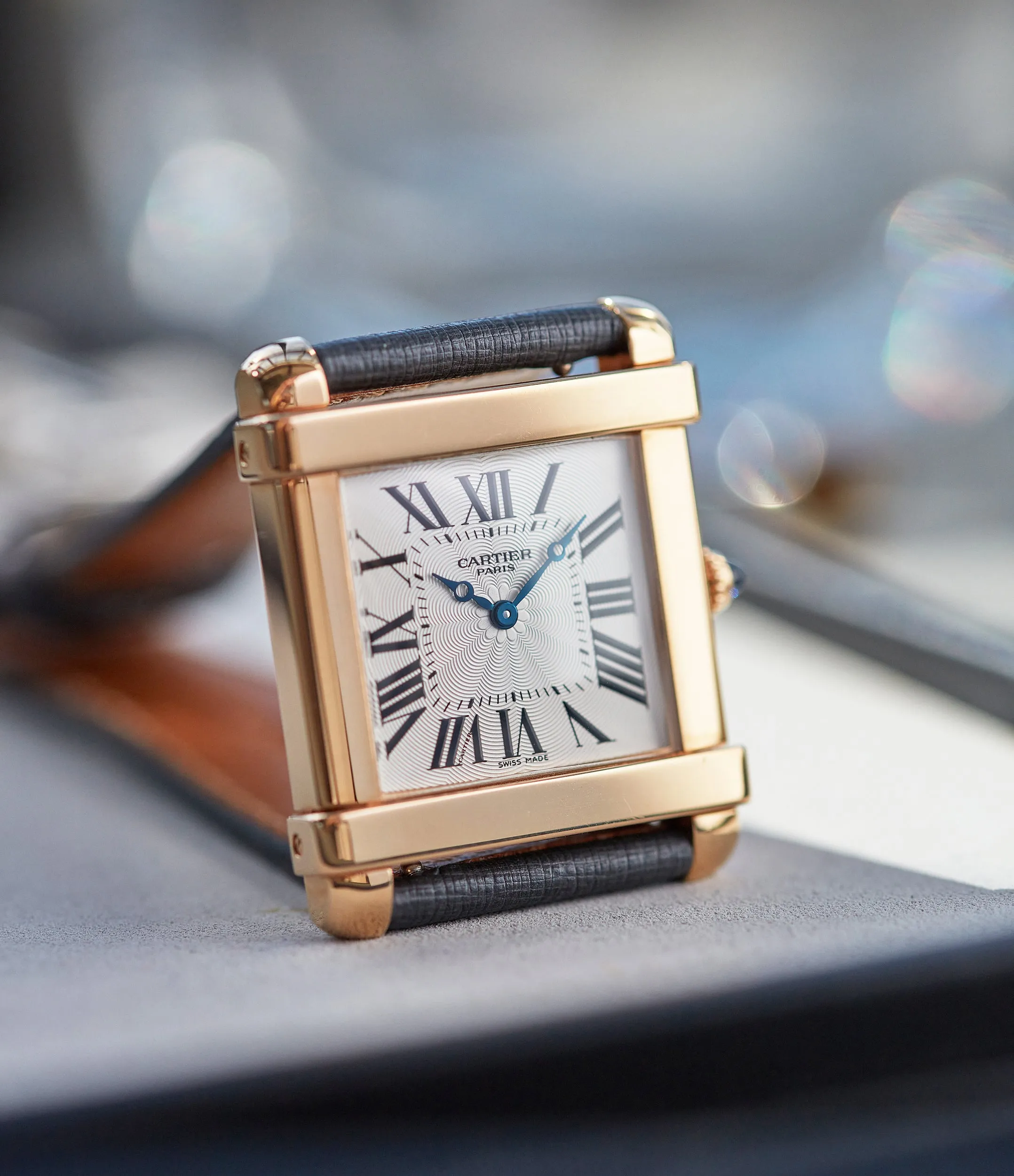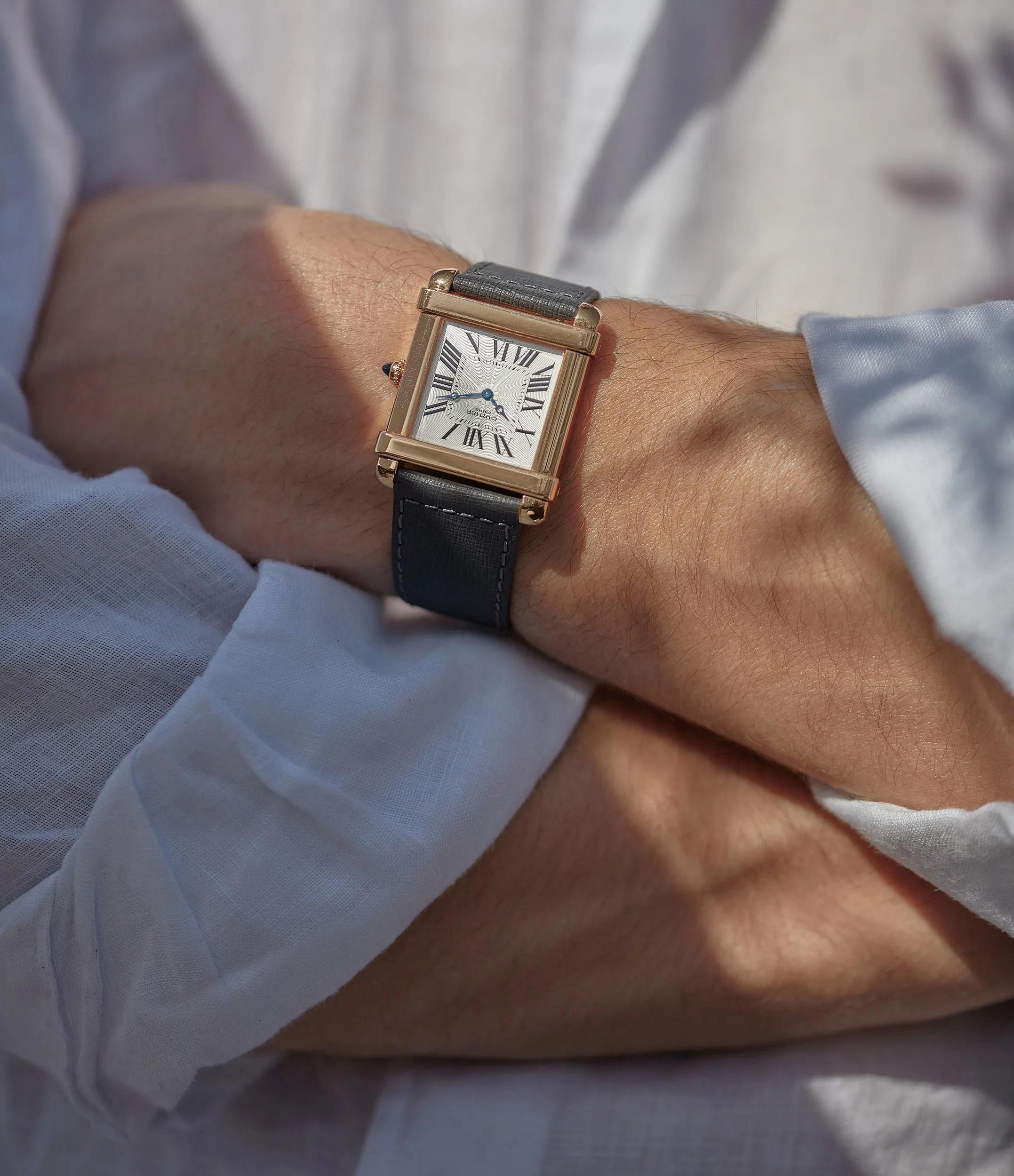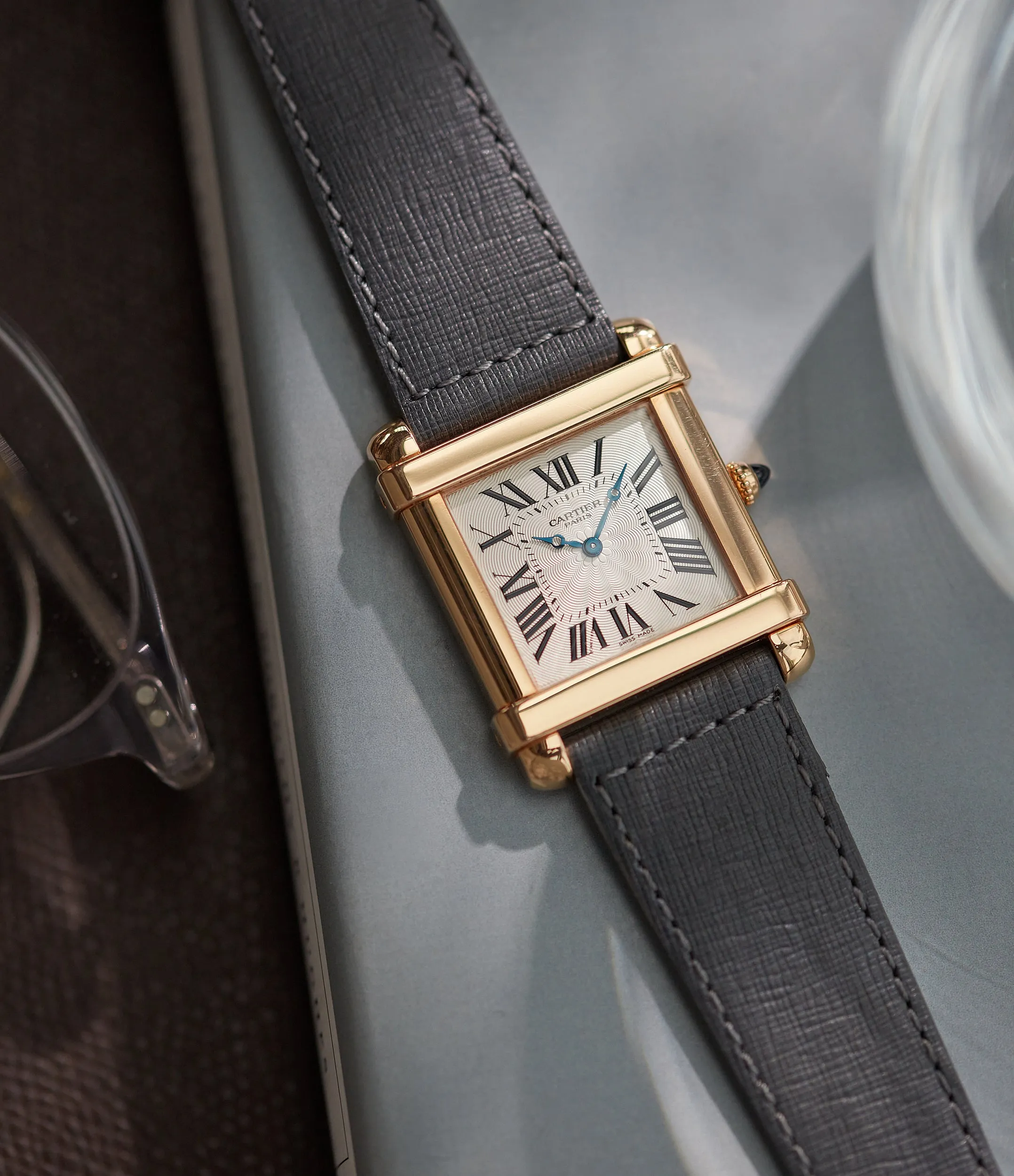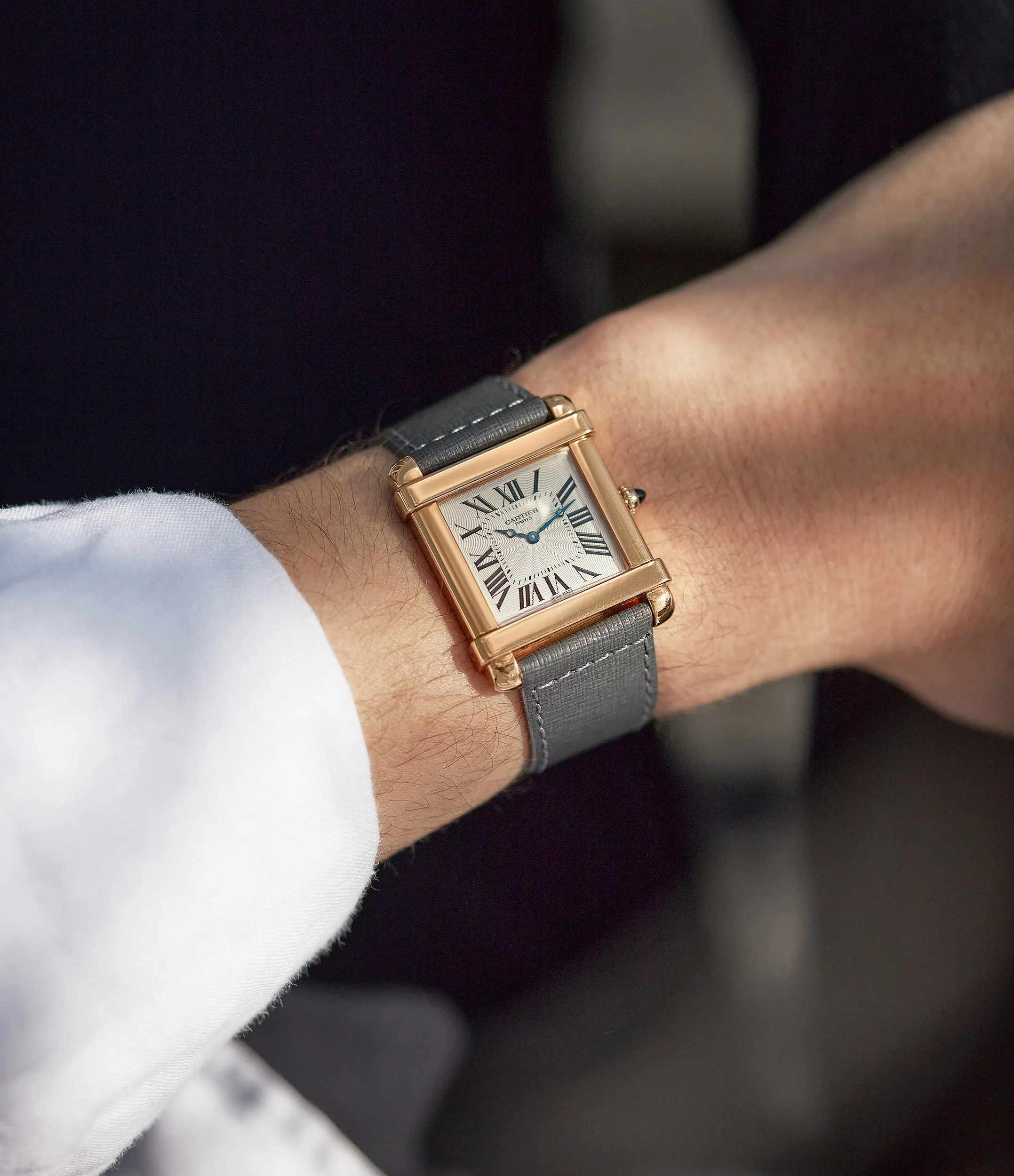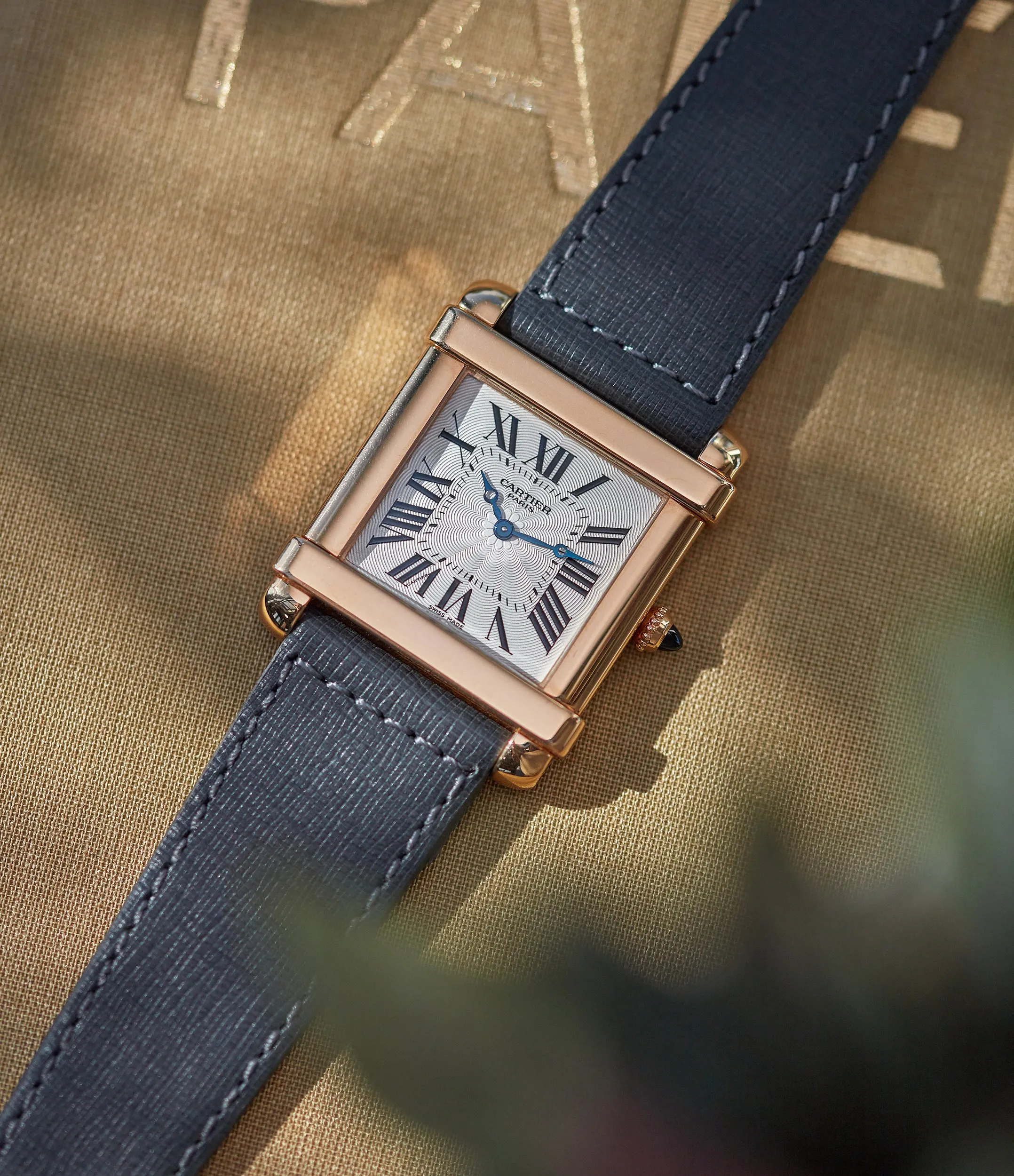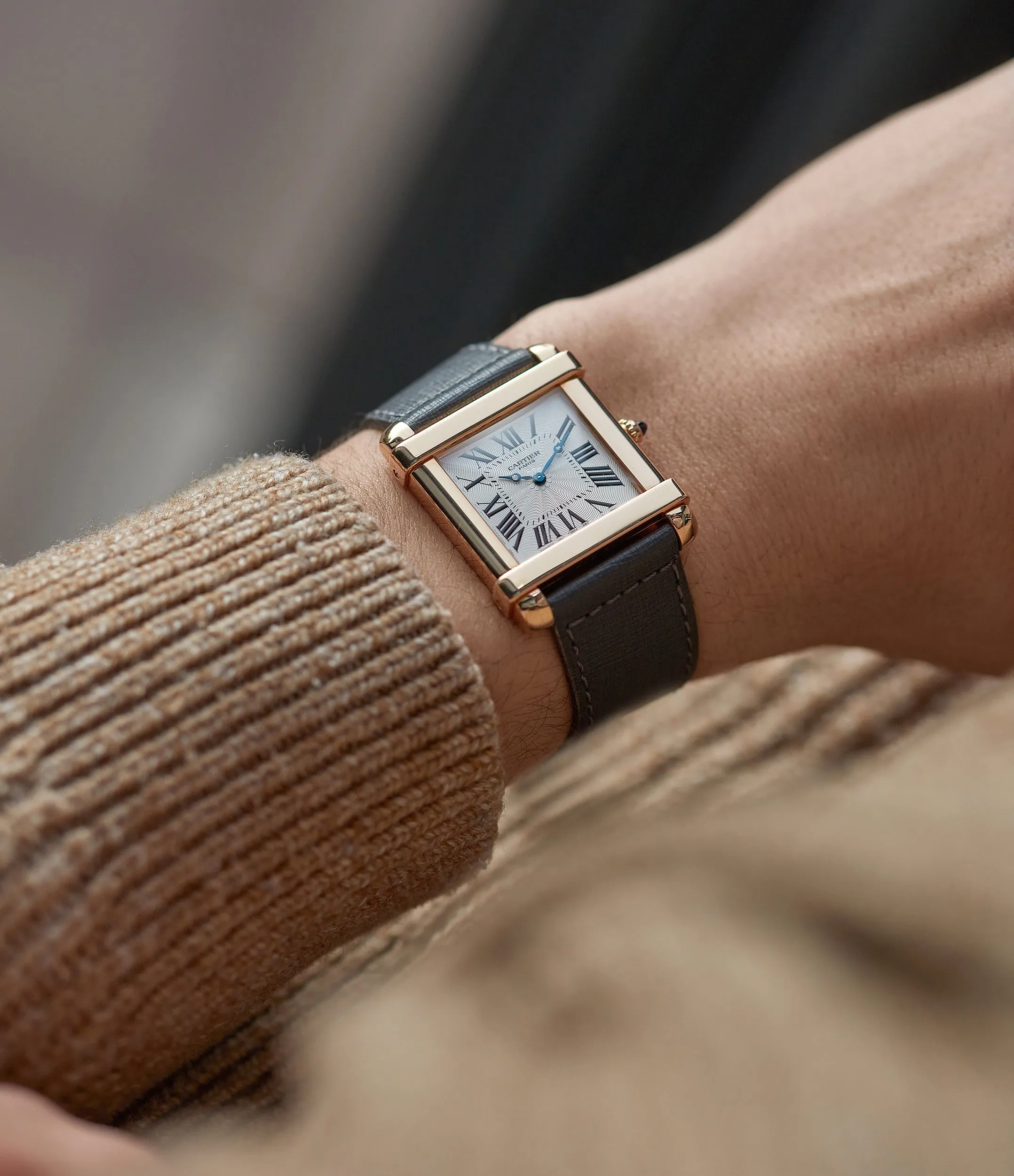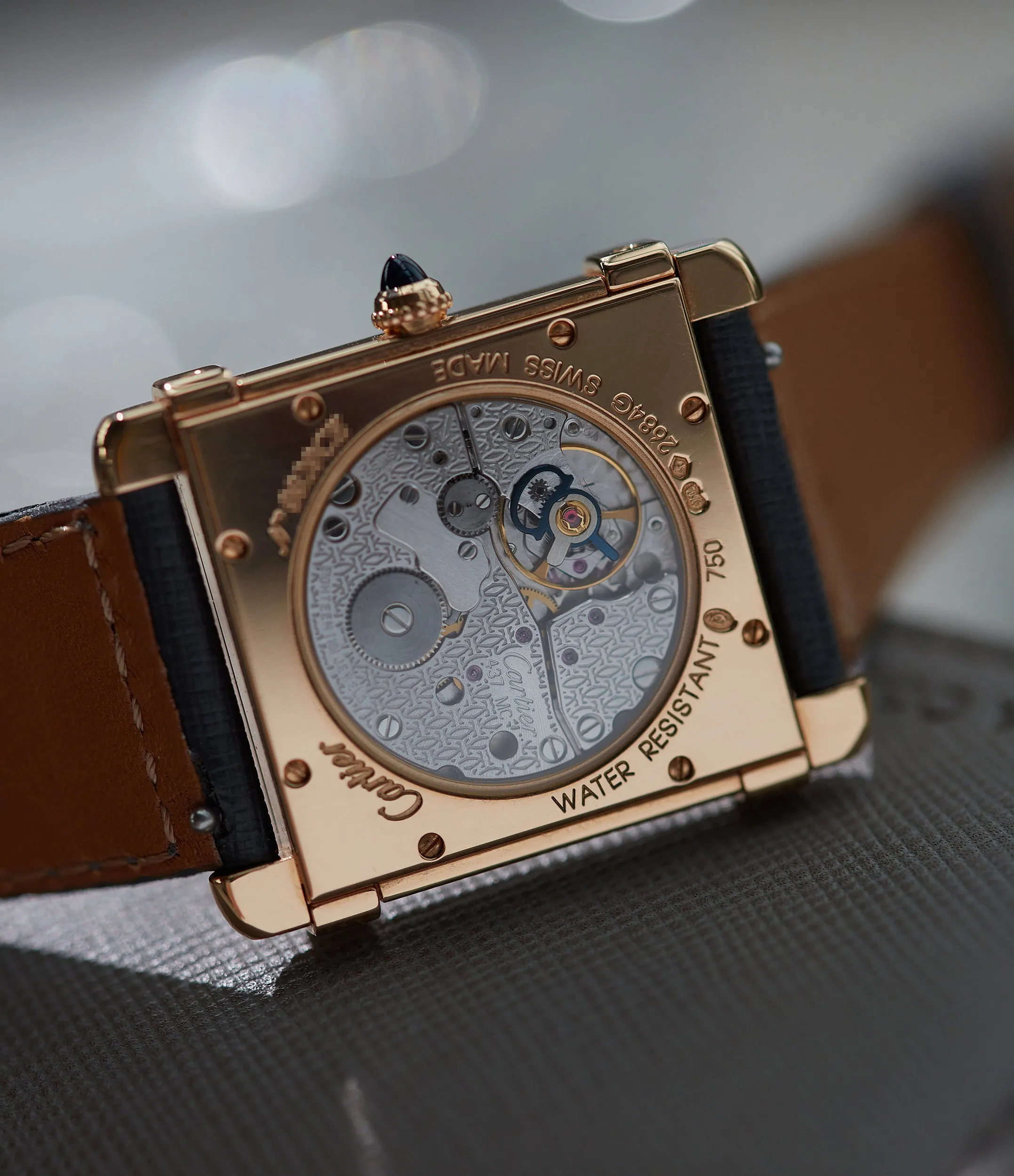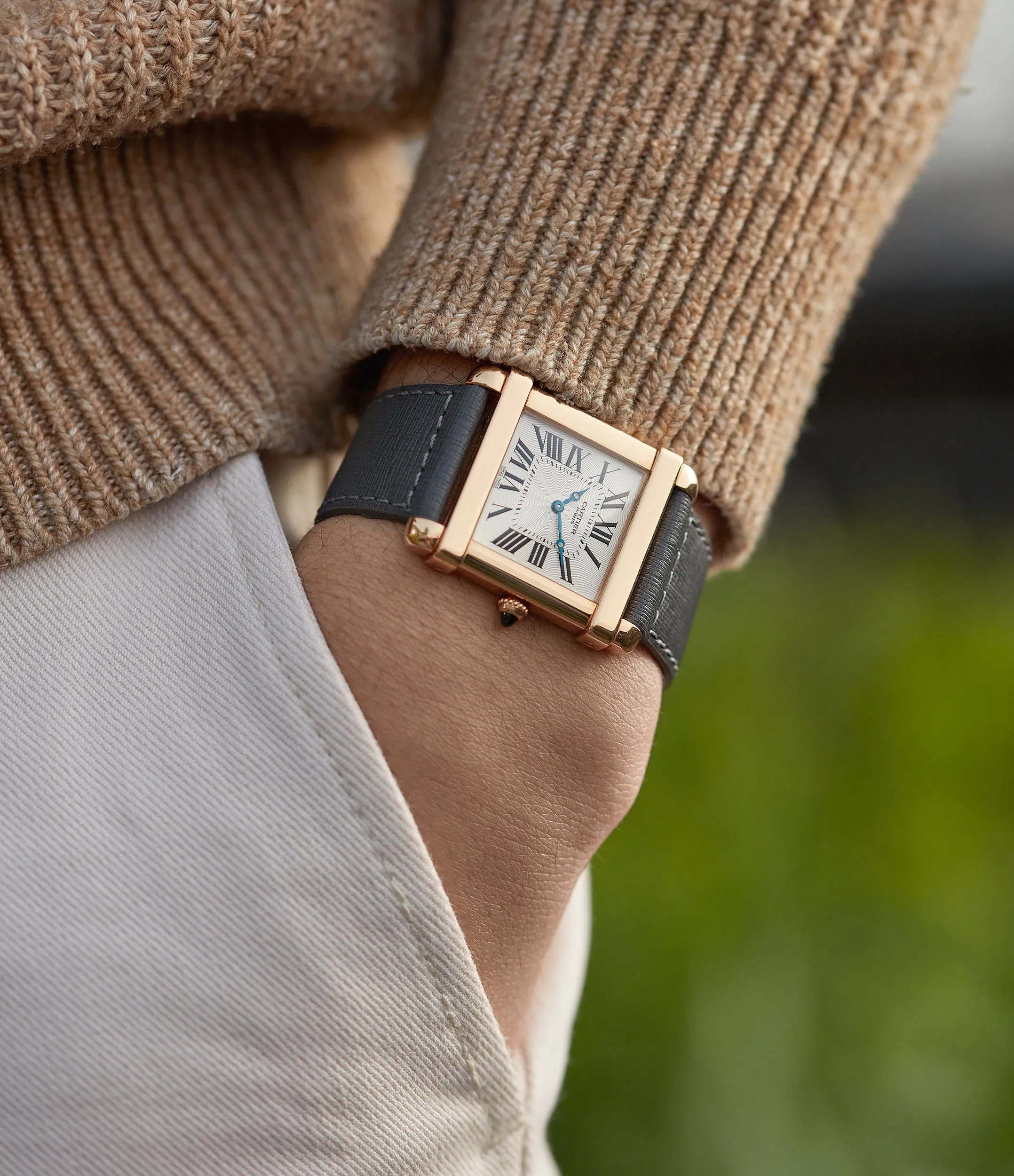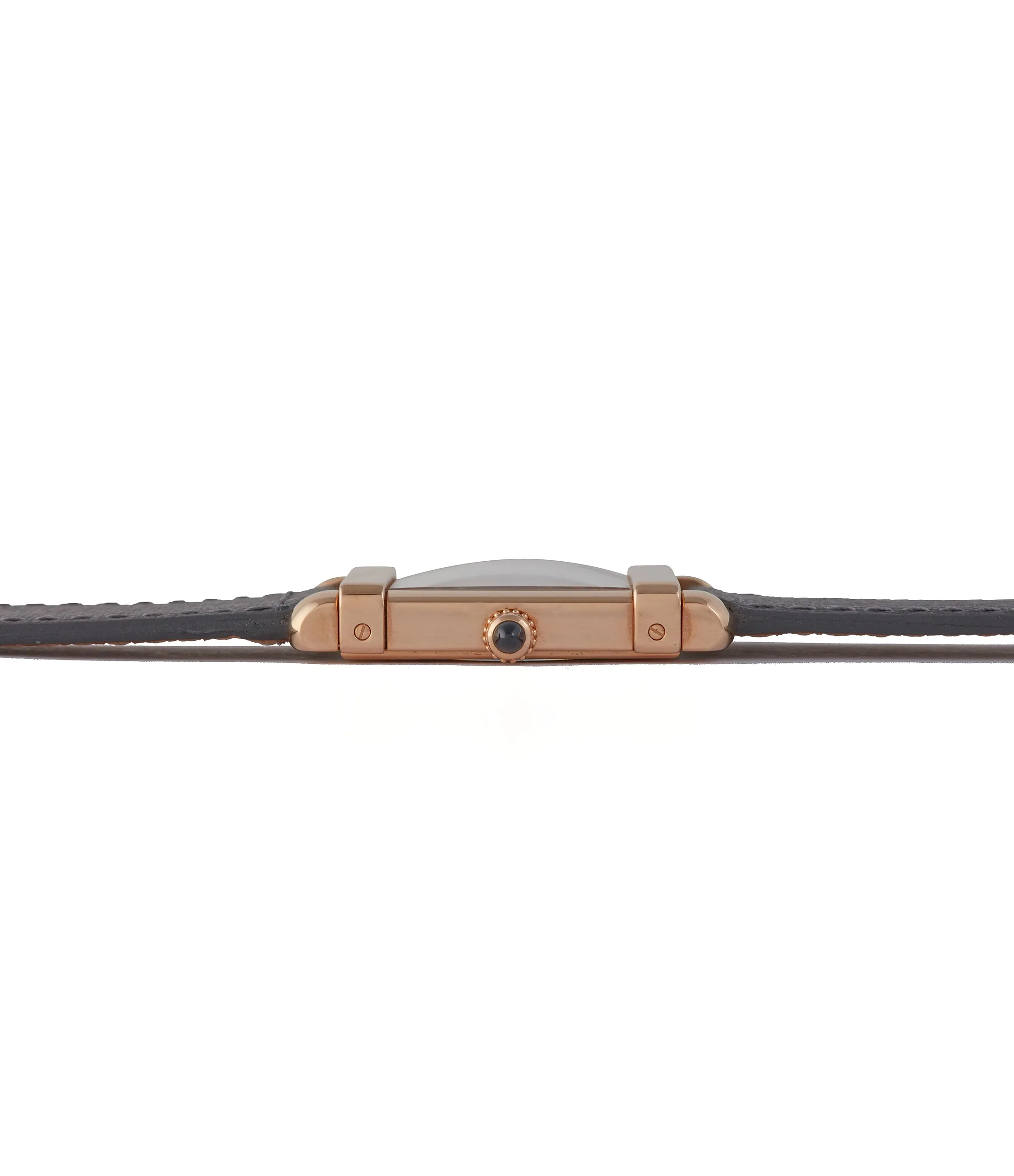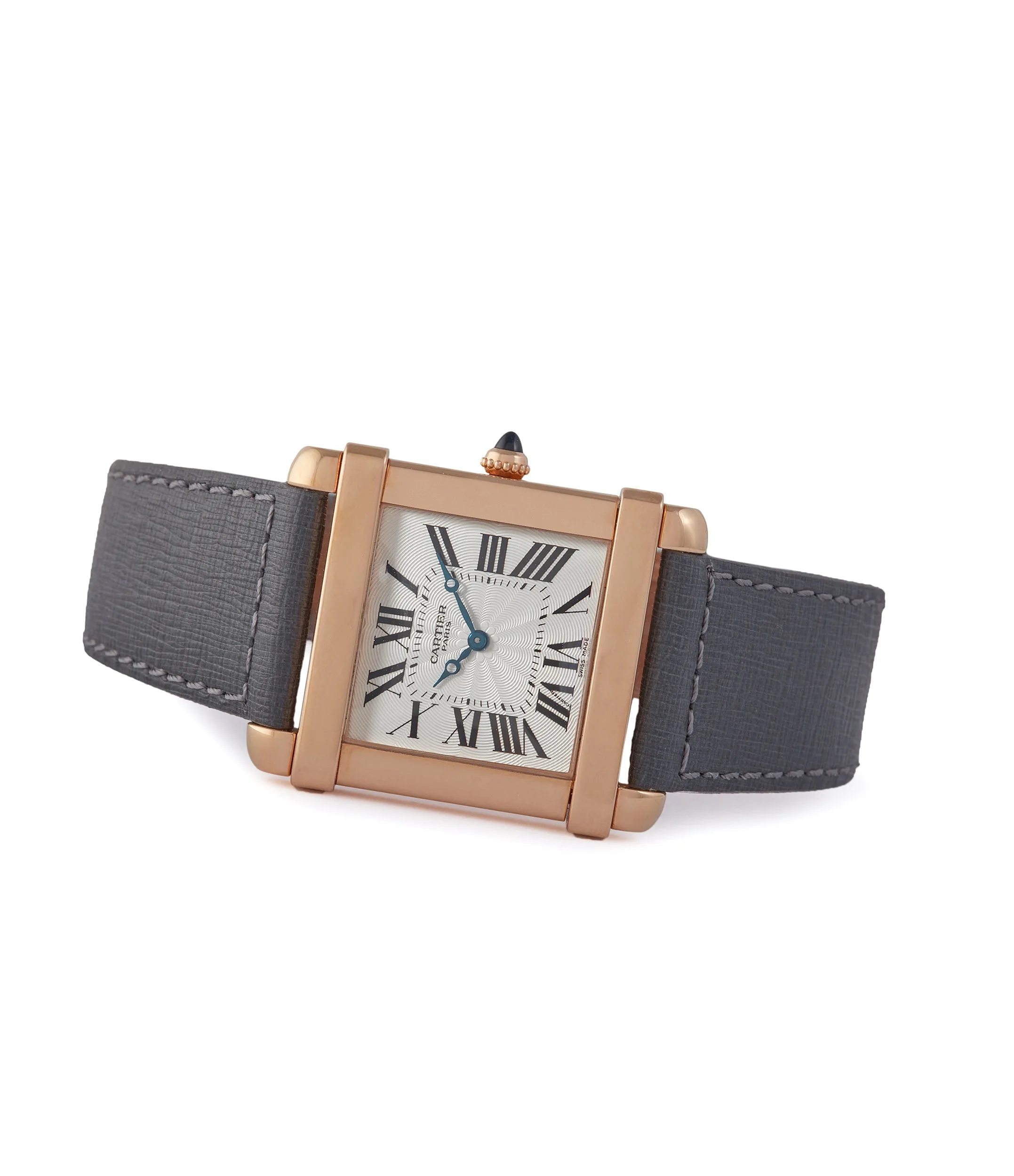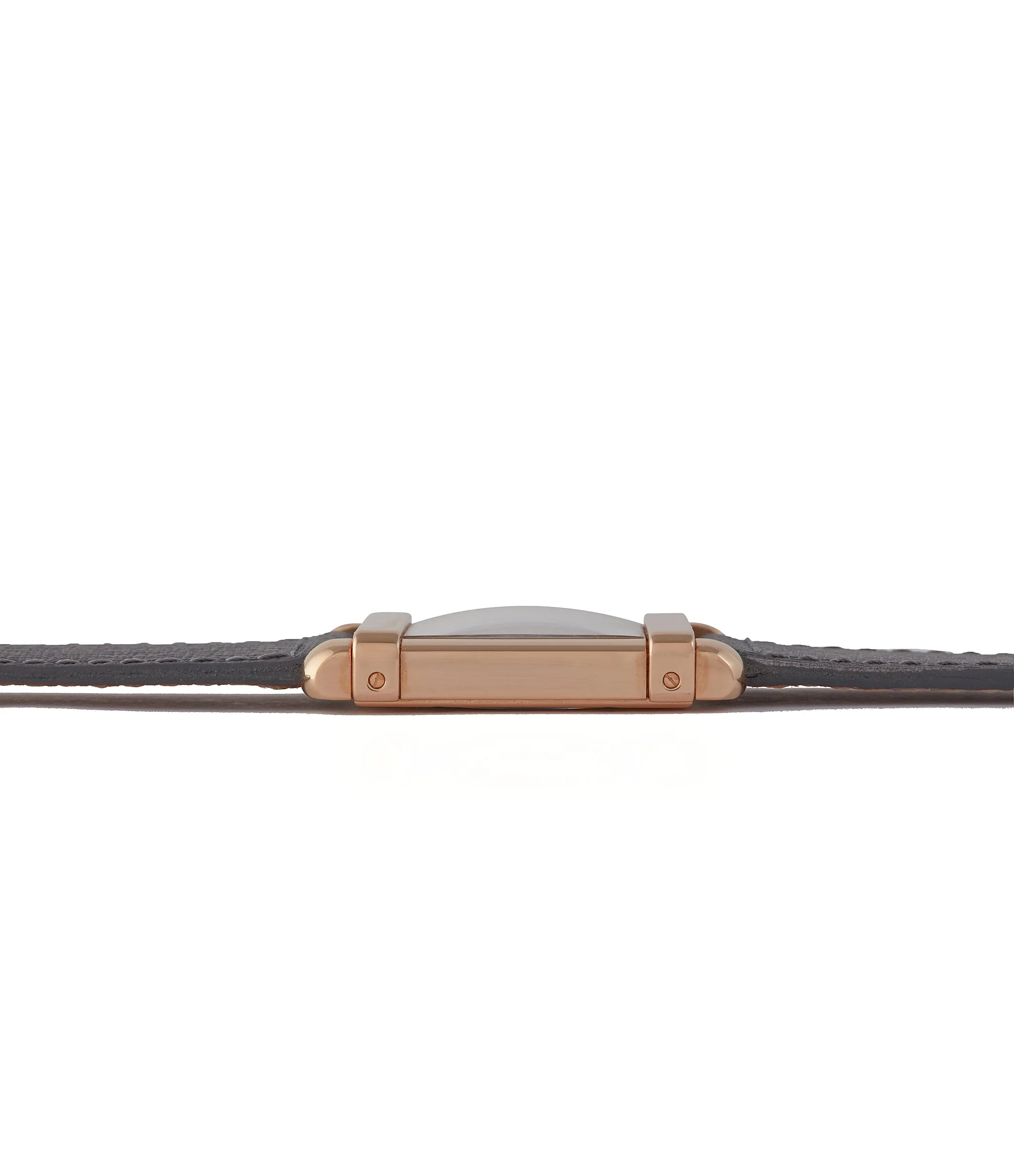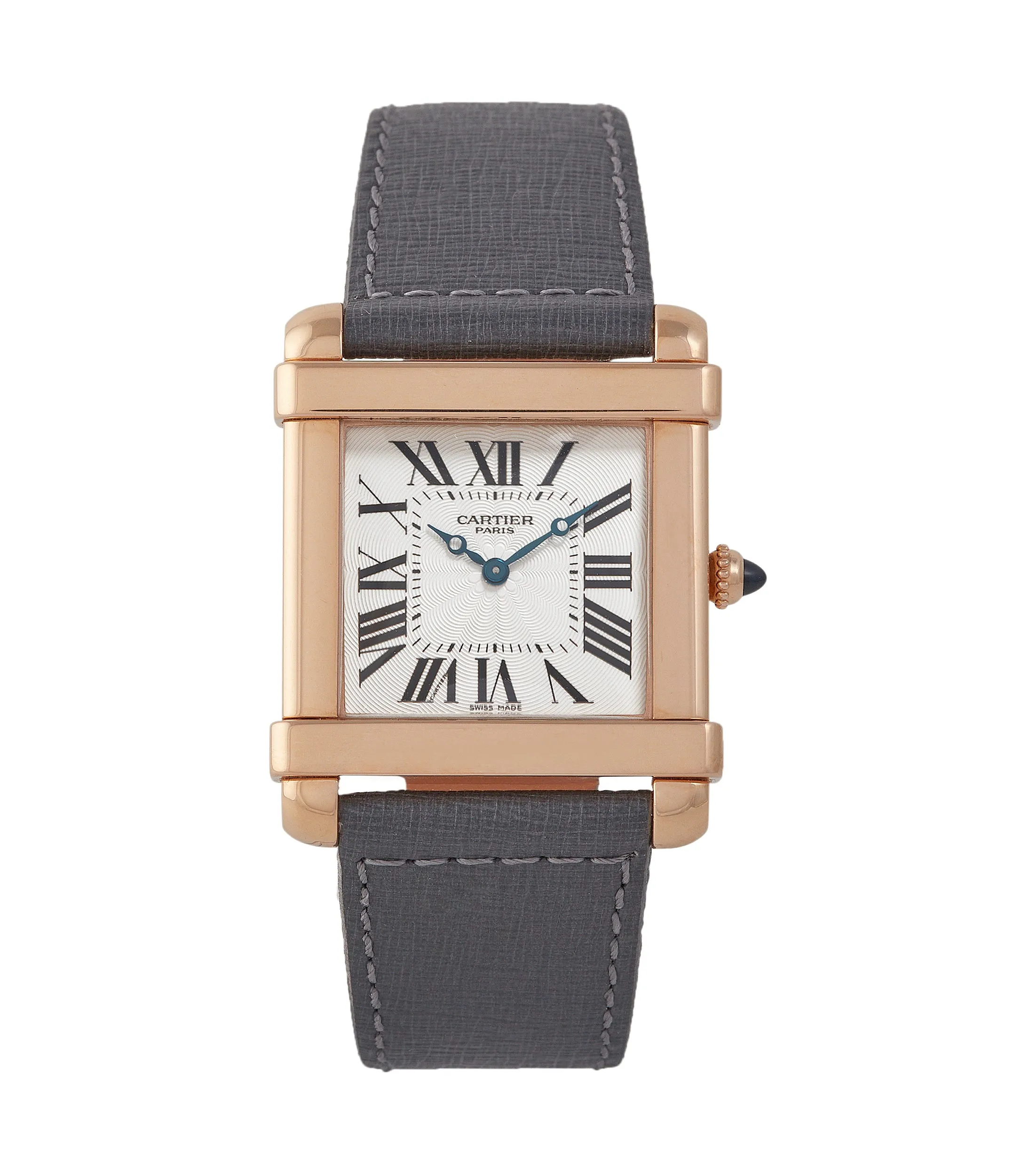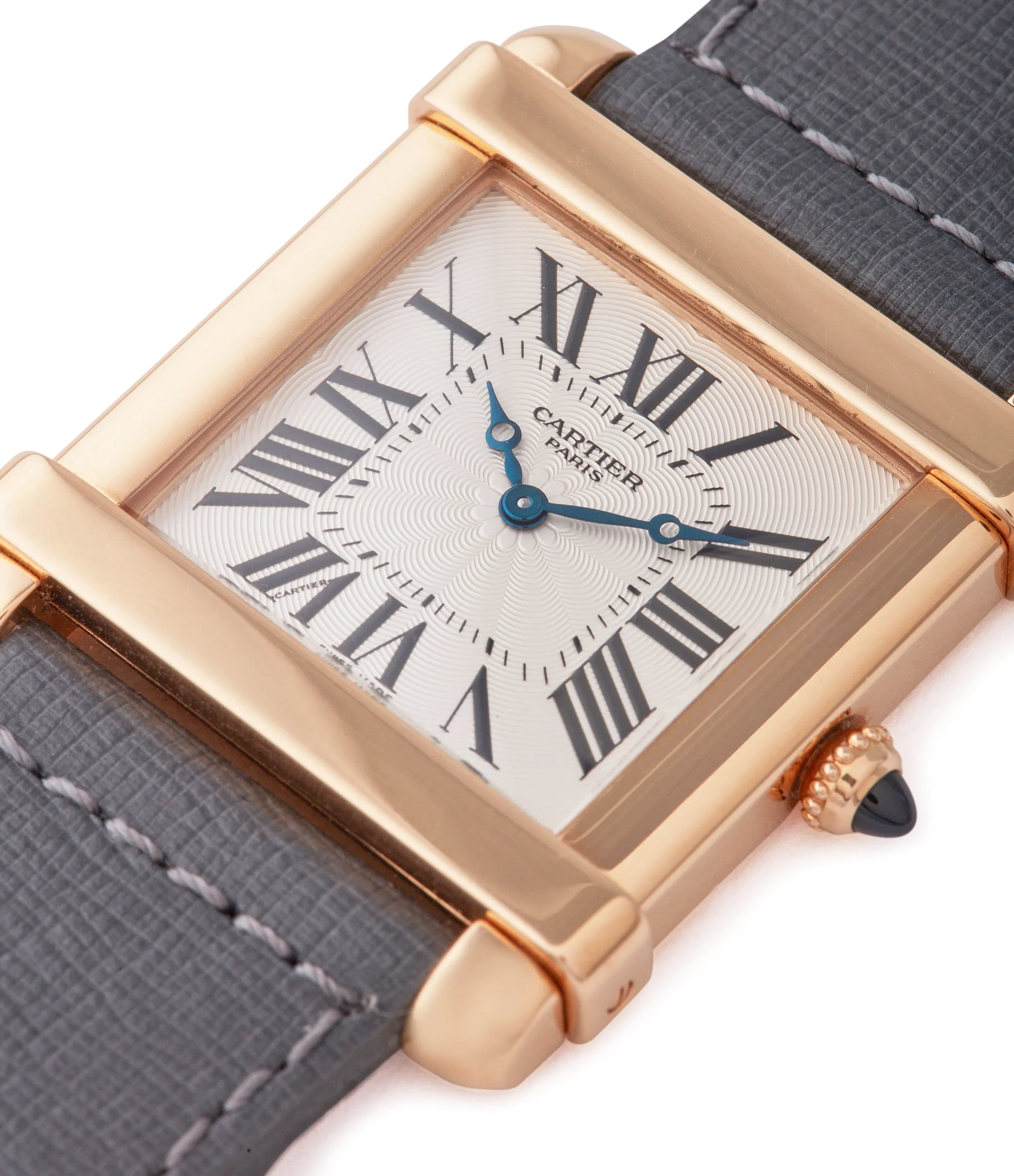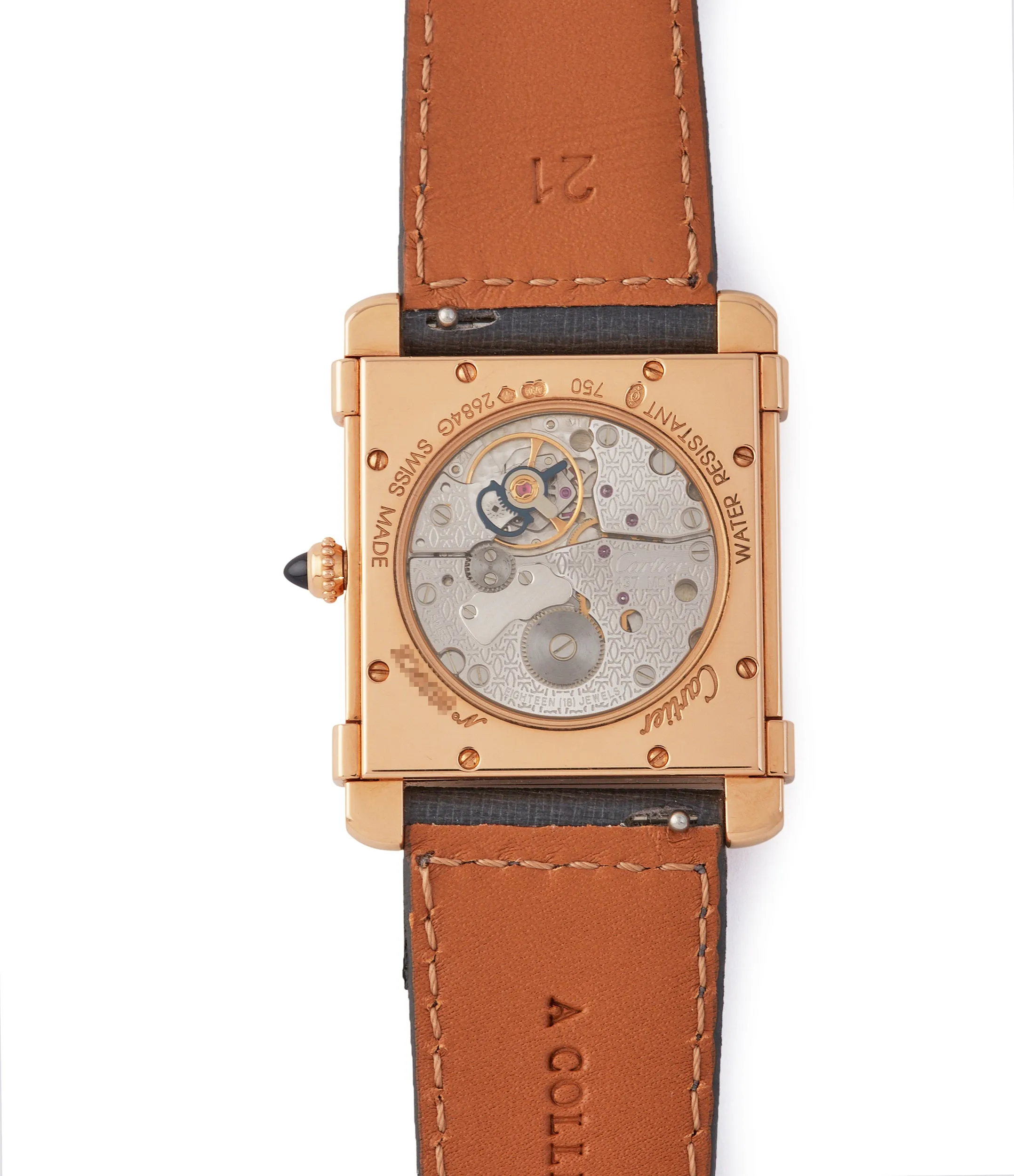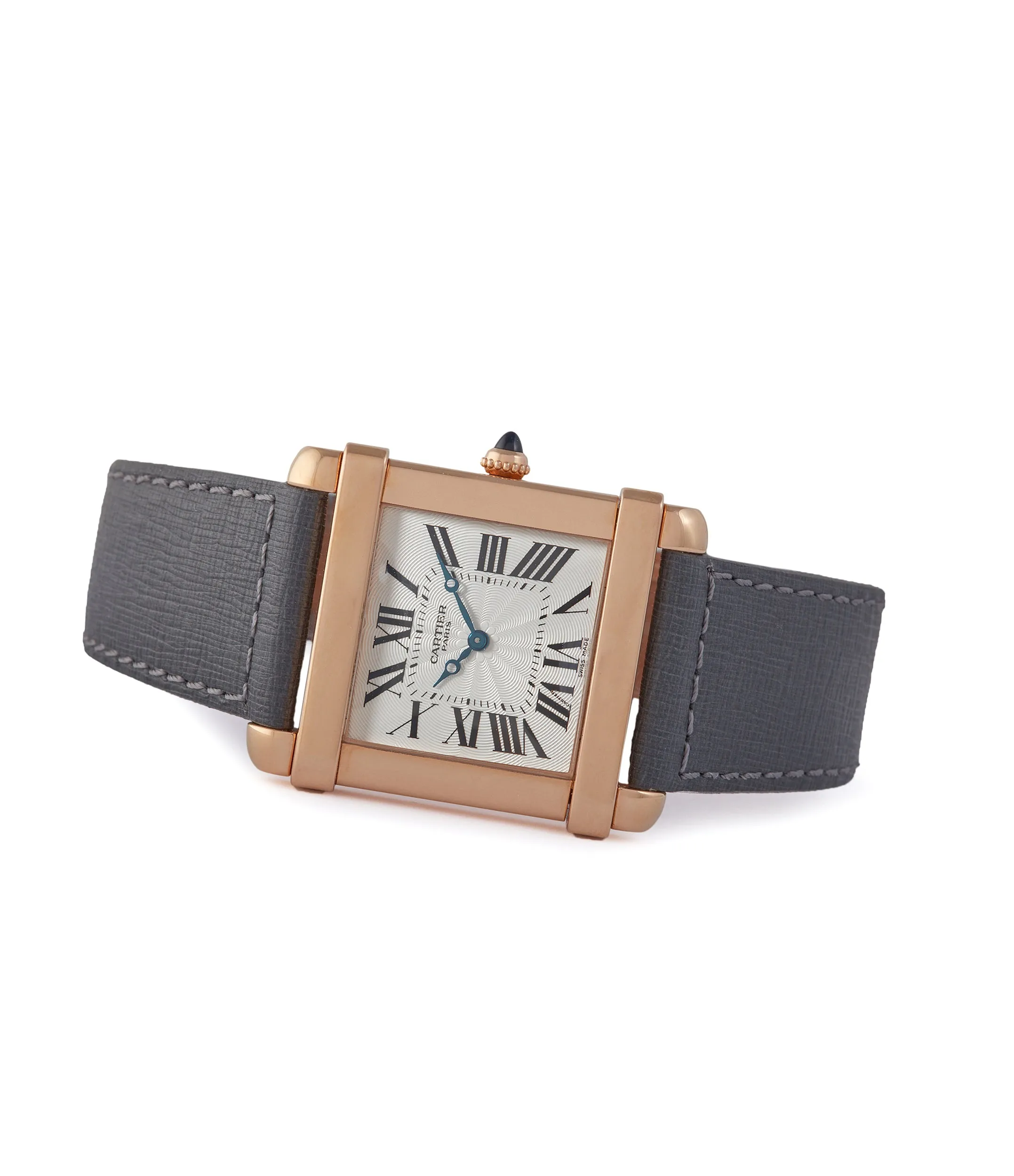This Tank Chinoise was produced as part of the Collection Privée Cartier Paris, which aimed to bring back some of the jeweller's most iconic designs, combined with high quality manual-winding movements. First imagined in 1922, and rarely ever recreated, it features a distinctive yet classic design.
The Collection Privée Cartier Paris
In the last decade of the 20th century, the industry was still recovering from the impact of the quartz crisis, with consumers just starting to redevelop an interest in mechanical watches. In the midst of this, Cartier aimed to reestablish its credibility as a true watchmaking manufacture. From 1998 to 2008, the Collection Privée Cartier Paris brought back some of the most iconic Cartier designs from the past century, from the to the , combined with high quality mechanical movements. In many cases, these distinctive designs hadn’t been produced for decades, speaking to the jeweller’s desire to place an increased focus on its heritage.
All the Collection Privée Cartier Paris - or CPCP for short - pieces housed high-quality mechanical movements, at a time when the jeweller was mostly associated with quartz. Not possessing the mechanical knowledge in-house, Cartier relied on a range of external suppliers, such as Jaeger-LeCoultre, Frédéric Piguet, Piaget or - a collaborative movement manufacture between , Denis Flageollet and . All the movements were manual-winding, rather than automatic, emphasising the traditional nature of this project.
The Attention to Detail
All the Collection Privée Cartier Paris watches feature small, distinctive details, intended to set them apart. With the exception of the Cintrée, all of them are signed “Cartier Paris” on the dial - a subtle nod to their vintage pieces. They also display a central rose motif just beneath the hands, which radiates into a classic guilloché. Even the subtle engravings on the caseback are reminiscent of what they used to do in the early 20th century. As for the manual-winding movements, these were finished in-house by Cartier, with their interlaced “double C” pattern appearing across the collection.
Despite the brand’s global reach at the time, the Collection Privée models were produced in small quantities, with many explicitly limited to 50, 100 or 150 pieces. As for those that weren’t marked as part of a numbered series, evidence suggests that production often remained between 200 to 500 pieces. Eventually, partially due to difficulties and delays in getting parts from their various suppliers, the CPCP program came to an end.
The Tank Chinoise
Cartier first produced the Tank Chinoise in 1922, at a time when aesthetics from the “Far East” had become wildly popular in European design. With “Chinoise” being the French word for Chinese, the model took the classic Tank silhouette and added broad horizontal bars above and below the dial, inspired by the lintels of Chinese temples.
Since then, the Chinoise has only occasionally re-appeared in the French jeweller’s collection, making it rather elusive. During the Collection Privée, Cartier recreated its distinctive lines, with a slightly larger case and a sapphire caseback. It is believed that these were produced exclusively between 2005 and 2008, in rose gold and platinum, with all of them being sold out by the time the Collection Privée came to an end. This rose gold example is amongst the first 25 pieces made, as indicated by the "N. 002X CE" number on the caseback.
A Classic Design
The original Tank from 1917 took inspiration from the Renault tanks which Louis Cartier saw in use on the Western Front. The Chinoise builds on this classic model, by adding broad horizontal bars above and below the dial, creating a distinctive and unmistakeable design. Four screws, found on either side of the lugs, hold the intricate case together.
The case measures 28mm by 29mm, with a lug to lug length of 37mm. This allows the watch to remain classic in appearance, whilst also being suited to contemporary tastes. At 8mm in thickness, with a gently curved front crystal, it fits easily under the cuff of a shirt. This Tank Chinoise features an open caseback, further highlighting the distinct characteristics found in the CPCP collection - a manually wound movement and interlaced “double C” pattern across the bridges.
As is to be expected, the dial is signed “Cartier Paris” centrally on the dial, a nod to some pieces from the early 20th century, which had the city’s name inscribed below the brand. The dial is made out of 18 carat gold, featuring a central rose motif just beneath the hands, which radiates into a traditional guilloché. Evidence suggests that the inspiration for this central rose came from vintage Cartier clocks, which often featured the distinctive decoration. The rail track and Roman numerals are stamped directly onto the dial in black ink, complemented by blued steel Breguet hands.
The Movement
This rose gold Cartier Tank Chinoise is powered by the Calibre 437 MC, which is based on a Piaget ébauche. Piaget helped develop a range of calibres for the Collection Privée Cartier Collection, drawing on their mechanical expertise, notably in the field of ultra-thin movements. The manual winding nickel lever movement features 18 jewels and approximately 40 hours of power reserve.
The Set
It comes on one of our boxed grey saffiano straps, and is also accompanied by its rose gold Cartier buckle.
Closer look
| Brand: | Cartier |
| Model: | Tank Chinoise 2684G |
| Movement: | mechanical manual-winding calibre 437 MC |
| Functions: | hours, minutes |
| Features: | guilloché dial, blued steel hands |
| Case: | 28mm x 29mm x 8mm (37mm lug to lug) |
| Crystal: | sapphire front and back |
| Bracelet: | boxed grey saffiano strap, rose gold deployant clasp |
| Year: | c. 2005 |
| Box & papers: | - |




